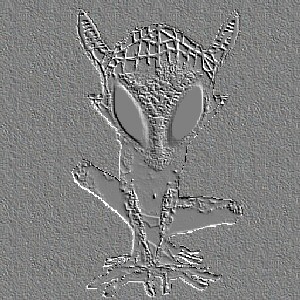Velosians

- Racial Name: Velulan-un; 'children of fire'
- Scientific Name: velasauridae velii
- Type: Reptile
- Origin: Velos, Velothi Island
Overview
Velosians, also interchangeably known as Velothians, were the ancient inhabitants of Velothi Island, and the ancient city of Velos. They were masters of controlling the land and rapidly advanced in terraforming and energy technology, far ahead of their time relative to the other major races. Because living outside of Velothi Island was considered an offense, their entire population lived on the same island. It is believed that this cultural decision caused them to become extinct when a disaster of unclear details occurred.
- Manufacture 2:8, The Book of Four
Culture
Velosians were deeply religious, and their whole way of life reflects this. They worshipped Pyraxa, the god of fire in the Four Pantheon. It is believed their reptilian nature attracted them to heat.
A large majority of the population lived underground, within the vast network of caves; the city of Velos was the hub of their civilization. Velosians lived underground to tap energy out of the local volcano, as well as building their religious shrines around the lava. As stated, they were masters of controlling the environment, and as such, they manipulated the volcanic activities to suit their needs. The few that lived on the surface were farmers, fishers, and coastal patrollers. Surface dwelling was also quite limited by Velothi Island's small size.
Their language was highly developed in both the written and spoken form; it is a lilting, almost musical-sounding tongue, which accommodated the Velosians' peculiar vocal cords. In its written form, called Daerathorics, it appears as a mixture of swirls and curls, and stone-carved calligraphy was a popular and highly respected art.
The Velosians were a like-minded, close-knit people. Lack of arguments and divisions in society fueled the rapid acceleration in technological advances. It was their goal to build the perfect environment (for them), which led to advances in terraforming.
By 1000CE, the Velosians were looking to expand their perfect environment to weather. However all plans concocted were concluded to be too dangerous to experiment on Velothi Island. After much debate, it was finally agreed upon to build a prototype on another island. They picked an uninhabited, distant island with ample resources - Norlisk Island, to the far southeast. In short, the technology failed and Norlisk turned in a snowy wasteland. Being fire lovers, the snow disgusted them, and their loss was seen as a symbolic punishment for leaving Velothi Island, reaffirming their belief to stay. See Norlisk Island for a detailed account.
Isolation
Velosians felt no need to meddle in the affairs of other races, as they were primitive compared to them, and wished not to change their way of life by introducing their advanced civilization. Travelers to Velothi Island were promptly, but peacefully told to leave. Even Subminians too, unless they already lived on the island. Subminians were only allowed to associate with Velos up to about 900CE, as Subminians were physically superior to Velosians when it came to mining. Hence, the Velosians hired them to bring them ore and other minerals. Around 900CE, Velosians outperformed Subminians due to new mining technologies invented. While they didn't kick Subminians off the island, they made it clear that they didn't want to associate with them anymore. Then eventually the vast network of underground caverns, where a majority of the population lived, put barriers up to separate the two races.
Disappearance

A painting of a blue Velosian perched
on a rock, painted in 1020CE
by Charles Goodfield.
On February 22nd, 1120CE - Sharman-Ar, the volcano, erupted, and it was felt throughout the region; tremblings were recorded as far away as Akureyri. At the same time, a powerful earthquake shook the region. Since then, Velosians have not been seen at all. Subminian scholars doubt the volcano eruption occurred naturally, because of the sheer amount of technology built around the lava ducts. The most popular theory was that "Velosians flew too close to the sun" with their terraforming technology.
The disaster caused most of the underground to collapse. Some were flooded with lava, though many caverns were protected against such threats by using things such as protective barriers and lava rerouting channels. The eruption annihilated all surface structures, and caused Velothi island to grow in size significantly. What is unclear is the lack of remains of the Velosians themselves. Some speculate they evacuated to another, collapsed part of the caves. Others think they completely burned up in the disaster. Due to this, Velothi Island is a major site for palaeontologists and cave spelunkers. Subminians are also known to make a fortune of off Velosian artifact discoveries.
Appearance and Dress
Velosians are reptiles standing about 1.5 meters tall. Their scales' color ranged from blue to purple to red to dark red (nearly black). A majority of females tended to be blue, and males red. They were not physically strong by nature, but fairly agile and good climbers, using their long fingers and claws to scale the rocks. Velosians did not wear any clothing, unless it was gear needed for their line of work.
